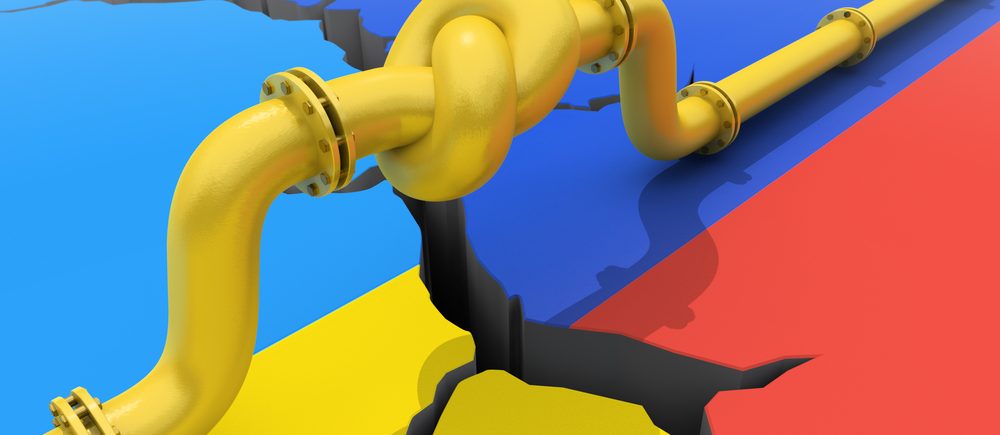Russian natural-gas supplies have increasingly become a tool of pressure in the conflict between Moscow and Europe over Ukraine while Europe still relies on Russia for 40 percent of the gas that warms and lights its homes and businesses.
The confrontation Russo-European conflict has also ignited a stubborn challenge for the world gas market with pains including price volatility and political manipulation than oil. Europe is turning to the United States to make up part of the gas deficit, but fossil fuel expansion encounters resistance over climate concerns and investor reluctance. Gas producers in North Africa are contending with regional political turbulence. Hopes for new gas from the eastern Mediterranean suppliers have been complicated by regional disputes in addition to competition from Asia.
The current conflict in East Europe has hastened the globalization of gas markets and complicated them significantly. Europe and Russia are already dueling over energy, with Europe moving to slash imports of Russian coal and oil. But the trade linkage is tighter for natural gas, which is harder and more expensive to ship than oil. Russia cut off gas sales to Poland and Bulgaria when they balked at demands to make payments in rubles.
In Europe, Germany is still buying but quickly shelved an additional Russian gas pipeline, Nord Stream 2, after the February. Gas supplies had been relatively stable since Russia briefly shortened shipments through Ukraine in 2006. The US had so much gas after a boom in shale drilling that it flared off excess output, much like Iraq and other oil-rich countries that often treat gas as a waste product.
The European Union has begun a transition to greener forms of energy. But financial and geopolitical considerations could complicate the efforts.
Global gas prices were rising in the months before the invasion for several factors including diminishing hydroelectric power in Latin America because of drought, and insufficient wind in Europe to propel renewables. Now, the disruption in Russian supplies has further raised prices in much of the world, and increased the burning of coal.
Europe produces only 20% of its gas needs, and its fields are in decline. The remainder of its gas is imported, nearly half of which usually comes from Russia. In recent weeks, imports from Russia have declined, while Norwegian production and imports of liquefied natural gas have increased to take their place. Germany, the primary engine of the European economy, is building expensive terminals to receive giant tankers filled with gas chilled to a liquid.
European countries have expressed an intention to phase out its dependence on over 150 billion cubic feet of annual imported Russian gas, partly by importing an additional 50 billion cubic feet of liquified gas, roughly 50 percent more than it currently imports.
Doing without Russian gas will not be easy, since the global gas market is only 523 billion cubic meters a year, nearly 20 percent of which already goes to Europe. New gas export terminals are coming online in the United States and Qatar, but demand is increasing even faster, especially in Asian countries trying to ease air pollution from coal burning.
That leaves the US, even though several of its gas fields have insufficient pipeline capacity and have attracted few major drillers because prices have been so low until recently. Since the Russian invasion, the Biden administration has pledged to increase gas exports to the European Union by 15 billion cubic feet, or roughly 40 percent. That is only about 10% of Russian shipments to Europe, but American energy experts say American companies could produce and ship much more gas with more pipelines and export terminals.
Environmentalists point out that natural-gas production releases methane, a powerful greenhouse gas, and warn that building a multibillion-dollar infrastructure will perpetuate carbon emissions for decades. The Biden administration has voiced support for both renewables and natural gas, fully satisfying neither environmentalists nor the oil and gas industry.
Aside from Russia, the Mediterranean region has become a leading gas source for much of Europe. But even as Mediterranean gas exploration has advanced, particularly in deeper waters, sales to Europe have run into nettlesome problems.
Italy has long depended on Libya for energy, even when Col. Muammar el-Qaddafi ruled with ruthlessness and anti-Western rhetoric. But today oil and gas fields and export terminals are often blocked by competing armed groups, including one aided by Russia.
Spain receives much of its gas by pipeline from Algeria, and Algeria would be happy to pump more gas to Spain and Portugal with a pipeline through Morocco, but a payments issue between Algeria and Morocco and worsening relations in general led to a stalemate in contract renewal talks last October.
Egypt has re-established operations in two L.N.G. terminals, exporting its own gas as well as Israel’s from their expanding offshore gas fields. China has offered such lucrative long-term contracts, however, that European buyers are finding it hard to compete.
North Africa’s gas exports to Europe fell by 5 percent in the first quarter of 2022 from the year before, according to Middle East Petroleum and Economic Publications, based in Cyprus.

 Noor Trends News, Technical Analysis, Educational Tools and Recommendations
Noor Trends News, Technical Analysis, Educational Tools and Recommendations




